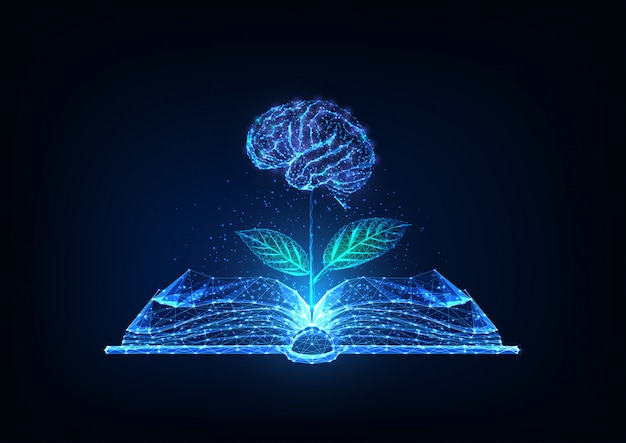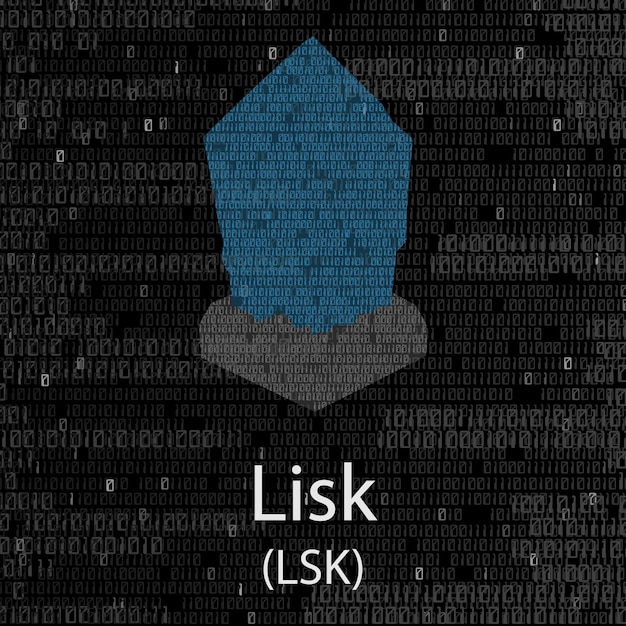Are you ready to unlock the potential of artificial intelligence with Python?
In this comprehensive deep learning tutorial, we’ll break down the complexities of neural networks and guide you through the entire process—from understanding the foundational concepts to building your first model.
Whether you’re a novice or looking to refine your skills, this guide will equip you with the knowledge needed to navigate the exciting landscape of AI.
Dive in and discover how deep learning can transform your programming journey!
Python Deep Learning Tutorial: Understanding the Fundamentals
Deep learning jest gałęzią sztucznej inteligencji, która wykorzystuje sieci neuronowe do nauki z dużych zbiorów danych. Podstawowym elementem tej technologii są sieci neuronowe, które składają się z warstw: warstwy wejściowej, ukrytej i wyjściowej. Każda z tych warstw pełni istotną rolę w przetwarzaniu danych.
Warstwa wejściowa przyjmuje dane surowe, na przykład obrazy lub tekst. Następnie te dane są przekazywane do warstwy ukrytej, która może składać się z wielu neuronów. Każdy neuron w warstwie ukrytej stosuje funkcje aktywacji, które decydują, czy dane są dalej przetwarzane. Dzięki tym funkcjom, sieci neuronowe potrafią uczyć się złożonych wzorców i dokonywać predykcji.
Po przetworzeniu danych przez warstwę ukrytą, wyniki są przekazywane do warstwy wyjściowej, gdzie następuje interpretacja wyników. Mechanizm ten wymaga także zastosowania funkcji strat, które minimalizują różnicę między przewidywaniami a rzeczywistymi wynikami, pomagając w treningu modelu.
Kluczowe koncepcje w zakresie podstaw deep learningowych obejmują:
-
Architektura sieci neuronowej: rozumienie warstw wejściowych, ukrytych i wyjściowych.
-
Funkcje aktywacji: decydują o “aktywowaniu” neuronów.
-
Funkcje strat: definiują, jak dobrze model przewiduje dane.
Te fundamenty są niezbędne, aby przejść do bardziej zaawansowanych zagadnień w dziedzinie głębokiego uczenia.
Setting Up Python for Deep Learning: Environment Configuration
A proper environment is essential for working with deep learning in Python. Here’s how to set it up effectively.
Step 1: Install Python
Ensure you have Python installed on your system. You can download the latest version from the official Python website.
Step 2: Create a Virtual Environment
Creating a virtual environment helps manage dependencies. Use the following command to create one:
python -m venv myenv
Activate the virtual environment:
- Windows:
myenv\Scripts\activate
- macOS/Linux:
source myenv/bin/activate
Step 3: Install Essential Libraries
Next, install the necessary libraries. Use pip to install TensorFlow and Keras, which are vital for deep learning tasks. Run:
pip install tensorflow keras
You might also consider installing other libraries commonly used in deep learning, such as:
- NumPy
- Pandas
- Matplotlib
- scikit-learn
- OpenCV
- Seaborn
To install these, simply append them to the pip command:
pip install numpy pandas matplotlib scikit-learn opencv-python seaborn
Step 4: Verify Installation
To check that TensorFlow and Keras are installed correctly, you can run the following commands in a Python interpreter:
import tensorflow as tf
import keras
print(tf.__version__)
print(keras.__version__)
Step 5: Set Up Jupyter Notebook (Optional)
For an interactive environment, consider installing Jupyter Notebook:
pip install notebook
Launch it using:
jupyter notebook
By following these steps, you will have a functional Python environment configured for deep learning, ready for experimentation with various models and techniques using the Keras deep learning framework and other python libraries for deep learning.
Building a Neural Network in Python: Step-by-Step Tutorial
A neural network can be efficiently constructed using Python and Keras. This guide takes you step-by-step through the process of building a simple neural network.
Preparing Your Dataset
Before building your neural network, prepare your dataset. Ensure it’s clean and scaled appropriately. For example, for a classification task, you can use the following sample code to load and preprocess the dataset:
import pandas as pd
from sklearn.preprocessing import StandardScaler
data = pd.read_csv('data.csv')
X = data.iloc[:, :-1].values
y = data.iloc[:, -1].values
scaler = StandardScaler()
X = scaler.fit_transform(X)
Building the Neural Network
Now, construct the neural network using Keras. Here’s how to set up a basic model:
from keras.models import Sequential
from keras.layers import Dense
model = Sequential()
model.add(Dense(16, input_dim=X.shape[1], activation='relu'))
model.add(Dense(8, activation='relu'))
model.add(Dense(1, activation='sigmoid'))
Activation Functions
Activation functions play a crucial role in neural networks by introducing non-linearity. In this example, relu (Rectified Linear Unit) is used in hidden layers, while sigmoid is employed in the output layer for binary classification.
Compiling the Model
Before training the model, compile it. This involves specifying the loss function, optimizer, and metrics:
model.compile(loss='binary_crossentropy', optimizer='adam', metrics=['accuracy'])
Training the Model
Now, train your model using the preprocessed dataset:
model.fit(X, y, epochs=50, batch_size=10)
Tuning Hyperparameters
Hyperparameters greatly affect model performance. Consider adjusting the number of epochs, batch size, learning rate, and number of nodes in each layer. Here’s an example of modifying the learning rate:
from keras.optimizers import Adam
optimizer = Adam(learning_rate=0.001)
model.compile(loss='binary_crossentropy', optimizer=optimizer, metrics=['accuracy'])
Common Challenges
While building a neural network, you may encounter challenges like overfitting. To combat this, consider techniques such as dropout and data augmentation to improve generalization.
Example Overview
Implementing a simple neural network with Keras involves data preparation, model construction, activation functions, compilation, training, and fine-tuning hyperparameters.
This approach empowers you to understand the intricacies of building a neural network and prepares you to tackle real-world problems effectively.
Deep Learning Applications: Real-World Use Cases
Deep learning technologies are making a significant impact across various industries, revolutionizing traditional methods with their ability to analyze vast amounts of data.
In the field of medical imaging, deep learning for image classification has proven effective in diagnosing diseases. For instance, convolutional neural networks (CNNs) are used to analyze X-rays and MRIs, detecting anomalies such as tumors with remarkable precision.
Another prominent application is natural language processing with deep learning. Models like recurrent neural networks (RNNs) and transformers enable advancements in language translation, sentiment analysis, and chatbot functionalities. Businesses are leveraging these technologies to enhance customer service and automate responses.
In retail, deep learning applications facilitate personalized recommendations through analyzing consumer behavior. By processing purchase history and browsing patterns, retailers can suggest products that align with individual preferences, enhancing the shopping experience.
Speech recognition represents yet another transformative application. Technologies driven by deep learning algorithms enable accurate voice recognition for virtual assistants like Siri or Google Assistant. This enhances user interaction and accessibility.
Moreover, deep learning is instrumental in the automotive industry, particularly in the development of autonomous vehicles. By processing feeds from cameras and sensors, deep learning algorithms empower cars to recognize road signs, detect obstacles, and navigate complex environments.
These examples exemplify how deep learning is reshaping diverse sectors, paving the way for innovative solutions and inspiring new projects.
Overcoming Challenges in Python Deep Learning Projects
W projektach głębokiego uczenia często napotykamy kilka kluczowych wyzwań.
Jednym z najczęstszych problemów jest overfitting w neural networks, gdzie model zbyt dobrze dopasowuje się do danych treningowych, co prowadzi do niskiej wydajności na danych testowych.
Możemy to zminimalizować, stosując techniki takie jak dropout, które losowo wyłączają neurony podczas treningu, co pomaga w generalizacji modelu.
Kolejnym wyzwaniem jest niedostatek danych, co może prowadzić do niedostatecznego ujęcia istotnych wzorców.
W takich przypadkach warto zastosować data augmentation techniques. Przykłady to obracanie, skalowanie czy zmiana jasności obrazów, co pozwala na sztucznie zwiększenie zbioru danych i lepsze trenowanie modelu.
Na koniec, tak ważne jak dane treningowe, jest odpowiednie ocenianie modeli.
Często nieprawidłowe metryki, jak dokładność, mogą prowadzić do mylących wyników.
Zastosowanie technik walidacji krzyżowej lub metryk specyficznych dla problemu, takich jak F1-score w zadaniach klasyfikacji, może poprawić nasze zrozumienie wydajności modelu.
Implementing Advanced Techniques in Python Deep Learning
Transfer learning is a powerful technique that enables you to leverage pre-trained models for your specific tasks.
In Python, libraries like Keras and TensorFlow facilitate this process with minimal overhead.
To implement transfer learning:
-
Load a Pre-trained Model: You can use models like VGG16, ResNet, or Inception, which are trained on large datasets.
-
Modify the Model: Replace the output layer to match the number of classes in your dataset.
-
Freeze Layers: Initially freeze the weights of the previous layers, training only the newly added layer to adapt to your data.
-
Unfreeze and Fine-tune: Once the new layer performs well, unfreeze some of the earlier layers and perform fine-tuning with a lower learning rate to enhance performance.
Hyperparameter tuning is crucial for model optimization. It involves adjusting parameters like learning rates, batch sizes, and the number of epochs to improve model performance.
Popular libraries for hyperparameter tuning in Python include:
-
Keras Tuner: A user-friendly interface to customize model iterations.
-
Optuna: A more advanced tuning framework that offers optimization strategies.
-
GridSearchCV: Part of scikit-learn, useful for systematic hyperparameter search.
During the tuning process, ensure to validate the model using techniques like cross-validation to mitigate overfitting.
Evaluating model performance is essential to understand its effectiveness.
Key evaluation metrics include:
-
Accuracy: The ratio of correctly predicted instances to the total instances.
-
Precision and Recall: Precision measures the correctness of positive predictions, while recall assesses the model’s ability to identify all relevant instances.
-
F1 Score: The harmonic mean of precision and recall, providing a balance between the two.
-
Confusion Matrix: A tool to visualize the correct and incorrect classifications.
By implementing these advanced techniques, you can enhance your deep learning models’ adaptability and performance in various applications.
Exploring the world of deep learning through Python enhances both your skills and your understanding of AI.
This guide provided essential insights into key concepts, tools, and practical applications.
Each section tackled foundational ideas, from neural networks to hands-on projects, ensuring a comprehensive learning experience.
As you progress in your journey, remember that experimentation and practice remain vital.
Embrace the challenges ahead with confidence and curiosity.
With dedication, this Python deep learning tutorial can unlock new opportunities in the ever-evolving tech landscape.
FAQ
Q: What is Deep Learning?
A: Deep learning is a branch of artificial intelligence that uses neural networks with multiple layers to learn from large datasets, identifying patterns and making predictions across various tasks.
Q: How do I get started with Python for Deep Learning?
A: To get started, install essential libraries like TensorFlow or Keras and familiarize yourself with basic programming concepts. Numerous tutorials can guide you through setting up your Python environment.
Q: What are the main architectures in Deep Learning?
A: Key architectures include Convolutional Neural Networks (CNNs) for image processing and Recurrent Neural Networks (RNNs) for sequence data, enabling applications like language processing and image recognition.
Q: How does a Neural Network operate?
A: A neural network processes data through interconnected layers of nodes (neurons), applying mathematical functions to learn from input data and make predictions based on trained models.
Q: What are common challenges in Deep Learning, and how can they be mitigated?
A: Challenges like overfitting can be addressed with techniques like dropout, data augmentation, and careful tuning of hyperparameters such as learning rate and batch size.
Q: What are the popular practical applications of Deep Learning?
A: Deep learning is applied in various fields, including image and speech recognition, medical diagnostics, chatbots, self-driving cars, and recommendation systems, showcasing its expansive impact.
Q: What is the role of optimization algorithms in Deep Learning?
A: Optimization algorithms adjust model weights and biases to minimize loss functions, enhancing overall model performance and accuracy through techniques like gradient descent.
Q: Why are GPUs essential for training Deep Learning models?
A: GPUs significantly speed up the training of deep learning models compared to CPUs, allowing for processing large volumes of data and complex calculations efficiently.
Q: What is the importance of data preprocessing in Deep Learning?
A: Data preprocessing is crucial for preparing datasets, ensuring data quality and format suitability for training, which directly impacts model performance and learning outcomes.


